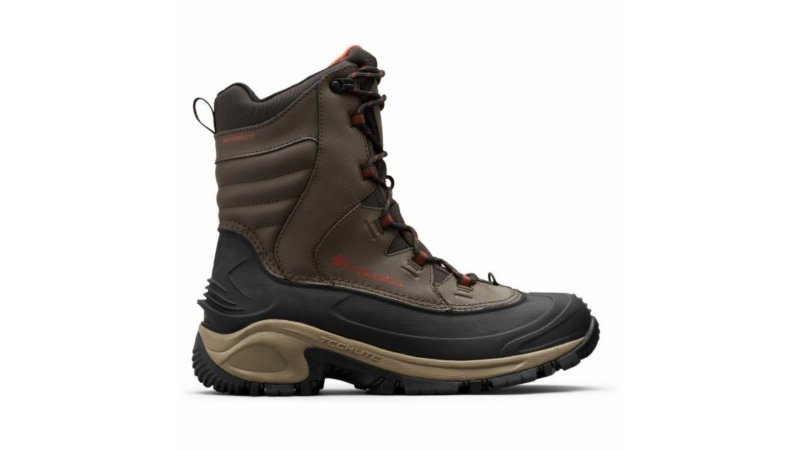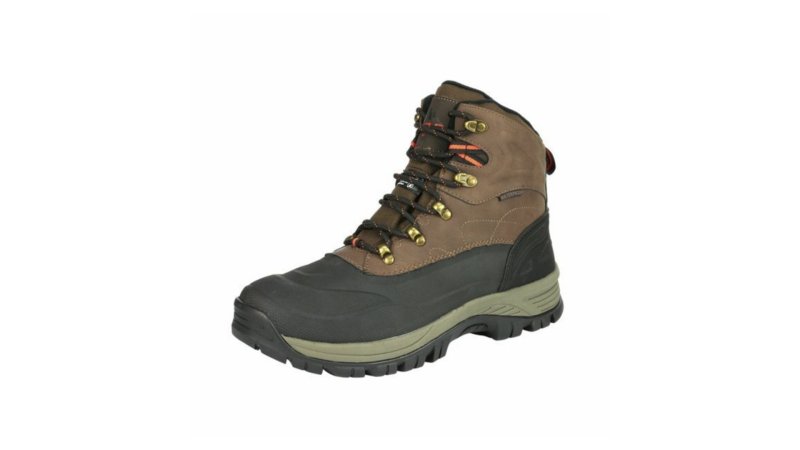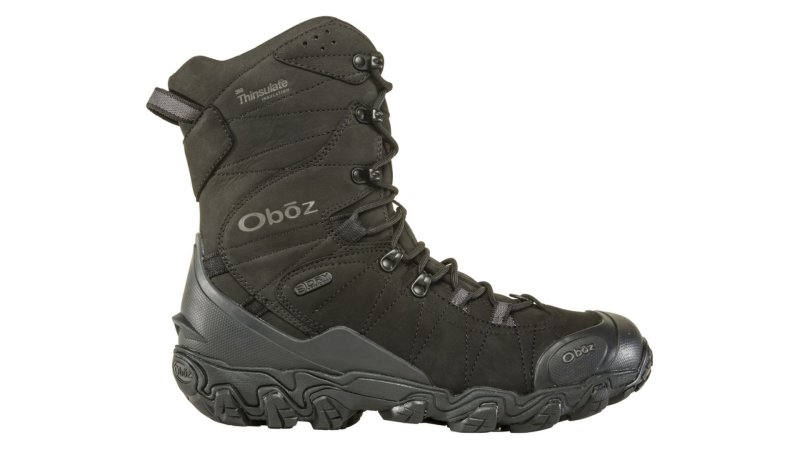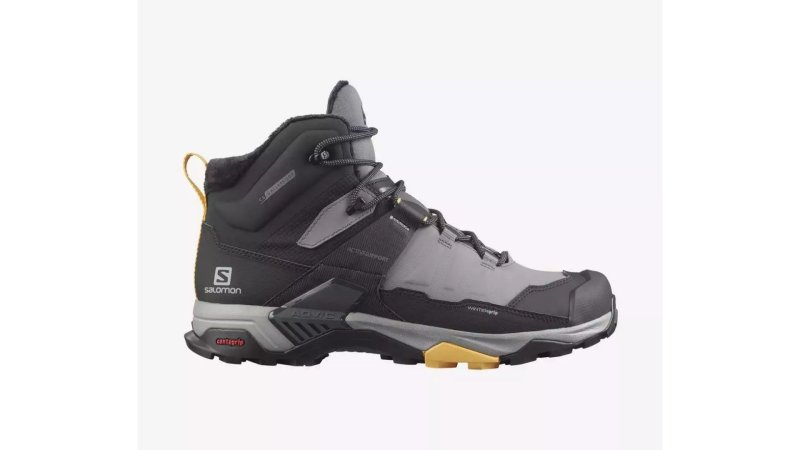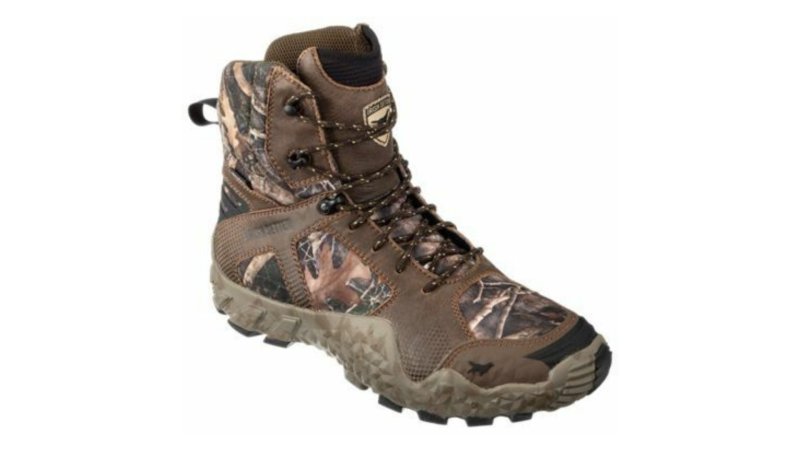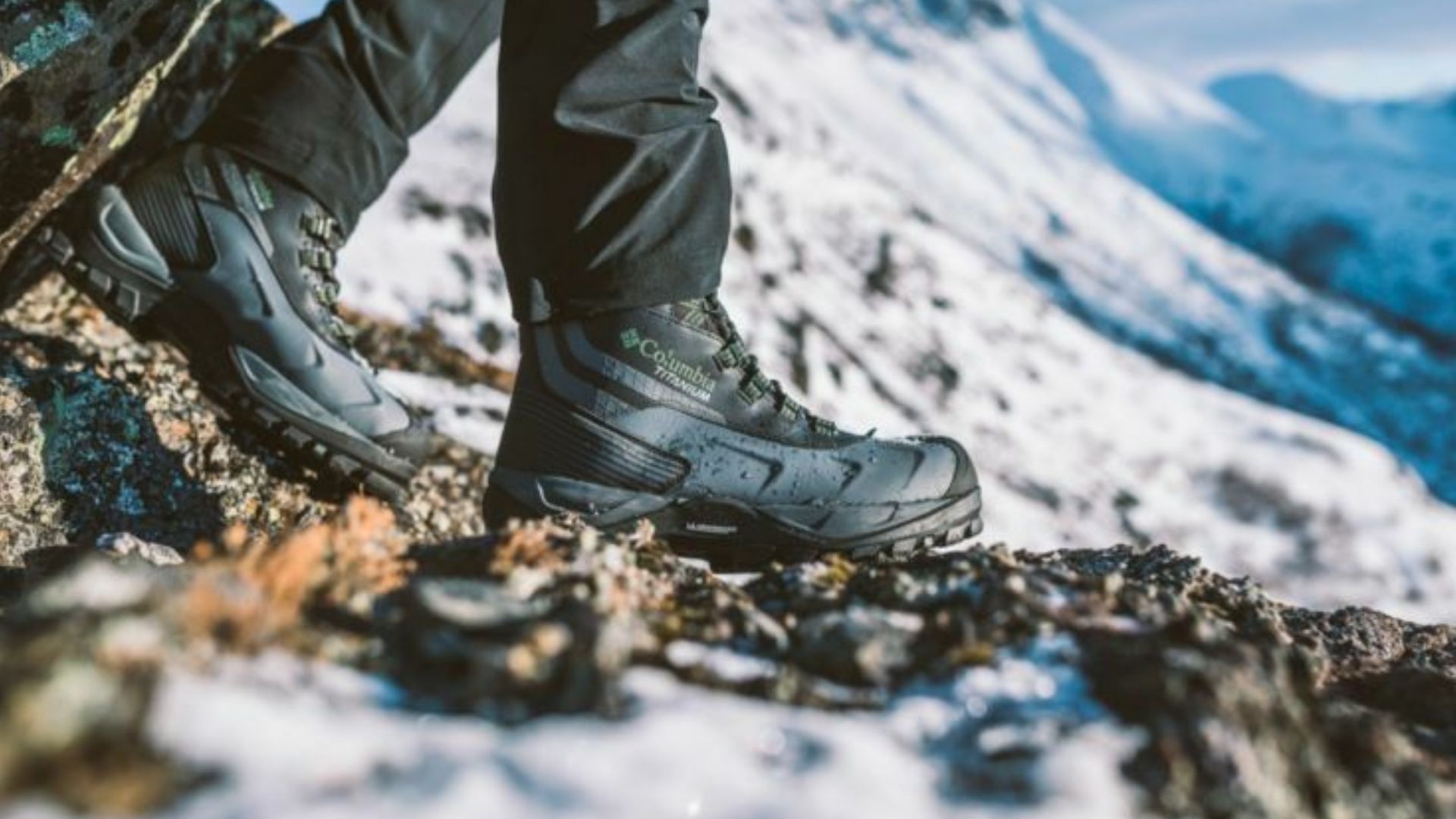

We may earn revenue from the products available on this page and participate in affiliate programs.
Nothing beats a leisurely stroll in the woods with a light dusting of snow on the ground — nothing except maybe a hike in the middle of January after a good Rocky Mountain snow dump. Whether you prefer breezy winter hikes over moderate terrain or you live and die for hardcore treks through frigid peaks and valleys without so much as a cell signal, a proper pair of the best winter hiking boots is an absolute must-have piece of gear. Sure, you could press your regular pair into service, but your next trip may be to the hospital to amputate your frostbitten toes. What about that old pair of relatively luggy snow boots in the attic? If they’ve survived storage, the chances are good that your feet will be plenty warm enough to feel all the sliding, jarring, and other abuse the trail will inevitably dish out.
Do yourself a favor and invest in the right gear for the job, including in a pair of the best winter hiking boots. Your feet will thank you if you do — hate you if you don’t.
Best Overall
Columbia Bugaboot III
Pros
- Good value
- Relatively lightweight
- Good traction
- Durable construction
- Gaiter-friendly
Cons
- May run a little small, narrow
Product Specs
- Insulation: 200-gram breathable insulation
- Rise: Tall
- Weight (pair): 3 pounds 1 ounces
Best Value
Nortiv8 Men's Snow Boots A0014
Pros
- Affordable
- Good value
- Very weather-resistant
- Gaiter-friendly
Cons
- Not long-term waterproof
- No half sizes available above size 11
- No equivalent women’s boot
Product Specs
- Insulation: 200-gram Thinsulate
- Rise: Mid
- Weight (pair): Not listed
Editor’s Choice
Oboz Men’s Bridger 10” Insulated
Pros
- Comfortable
- Good traction
- Durable construction
- Gaiter-friendl
Cons
- Expensive
- Run slightly small
Product Specs
- Insulation: 400-gram Thinsulate
- Rise: High
- Weight (pair): 3 pounds 5.8 ounces
Winter Hiking Boots for Extreme Cold
Columbia Powderhouse Titanium
Pros
- Minimal break-in period
- Very warm
- Great on ice
- Gaiter-friendly
Cons
- Expensive
- Constant/high-intensity movement required to achieve -65° temperature rating
- May run a little wide
Product Specs
- Insulation: 600-gram breathable insulation with Omni-Heat 3D reflective lining
- Rise: Tall
- Weight (pair): 3 pounds 5.5 ounces
Best Zippered Winter Hiking Boots
Danner Arctic 600 Side-Zip
Pros
- Lightweight
- Easy on/off
- Great on ice
- Supportive
Cons
- Expensive
- No gaiter D-rings
Product Specs
- Insulation: 200-gram PrimaLoft
- Rise: Mid
- Weight (pair): 2 pounds 13 ounces
Best Lightweight Winter Hiking Boots
Salomon X Ultra 4 Mid Winter
Pros
- Comfortable
- Lightweight
- Good traction
- Good support
Cons
- Lacks the durability of heavier boots
- No gaiter
- D-rings Low shaft height
Product Specs
- Insulation: 200-gram Thinsulate
- Rise: Mid
- Weight (pair): 1 pound 14.8 ounces
Best Winter Hiking Boots for Hunting
Irish Setter Vaprtrek
Pros
- Lightweight
- Short break-in period
- Odor-reduction treatment
Cons
- Not the most aggressive tread pattern
- No gaiter D-rings
- Women’s version only available with 400-gram insulation
Product Specs
- Insulation: 400-gram PrimaLoft (800- and 1200-gram PrimaLoft available)
- Rise: Mid
- Weight (pair): 2 pounds 6 ounces
Why you should trust us
For decades, I’ve lived at the foot of the Rockies and all that comes with the territory. (If you remember the Blizzard of ‘97 along the Front Range, give me a shoutout in the comments section below.) I’ve written about boots of all kinds before (such as tactical boots) and know what separates the good from the bad. In addition to having numerous mountain and foothill hikes under my belt, I’ve also experienced more than my fair share of blizzards, snowstorms, and winter weather extravaganzas. I know what a good, reliable hiking boot should include, but I’m also not afraid to tap into the knowledge of those with even more experience than I do.
Types of winter hiking boots
While hiking boots in general have a decent range of sub-niches, winter hiking boots tend to be more specialized than the broader hiker category. Still, winter hiking boots do have some degree of diversity worth exploring. Standard winter hiking boots tend to be warmer (and heavier) than their warm-weather brothers, and those built for hunting and extremely cold temps come with some additional features.
Backpacking boots
Backpacking may seem like an elite outdoor sport for some (or a sadistic form of self-punishment for others). Whatever the case, a reliable pair of winter backpacking boots is non-negotiable for that special breed of hiker. Predictably, winter backpacking boots are a breed all their own as well.
Easily the biggest difference between a traditional hiking boot and a backpacking boot is the extra ankle support found in the backpacker’s footwear, although upgraded durability and toughness are equally as important. While it may go without saying, winter backpacking boots demand all the same features as traditional backpacking boots but with the obvious need for insulation, waterproofing, and other winter-specific features.
Hunting boots
Traditionally, hiking and hunting boots have tended to fall into different categories, thanks to somewhat different user demographics. That said, when the rubber meets the gravel, the differences between boots designed for active winter hunts and those created for winter hikes are surprisingly minimal. Both are insulated, provide good ankle support, and are designed for long hours in the backcountry.
Due to their need to battle lower temps, hunting boots, like winter hikers, tend to pack on the ounces thanks to critical insulation layers, although both designs emphasize lightweight construction. In terms of fit and feel, hunting boots may have slightly more flexible soles to provide better ground feel and a slightly warm insulation due to the generally slower pace of hunting.
Additionally, hunting boots frequently include scent-proof membranes or other scent-killing features. We all know the lethal consequences of overexposure to sweaty feet and boots, but it turns out even a minor whiff of said odor can kill a mountain hunt faster than you can blink.
Extreme cold boots
Winter hiking boots designed for the extreme cold may be your best option if you live in Montana, Alaska, or other absurdly cold and rugged locales. These hikers combine critical hiking boots elements with the best snow boots have to offer for an extremely warm, go-anywhere hiker.
Usually, these boots are optimized a little more for use in the snow, but they still provide plenty of grip for rocks, gravel, and other significant terrain features. These boots boast some top-notch insulation, and many include extra sole thickness to increase underfoot insulation. Of course, all these add-ons will increase the overall weight, but the tradeoff is warmth that’ll keep icicles off your toes.
Key features of winter hiking boots
Comfort
While comfort may be a somewhat subjective feature, it’s still a critical consideration when selecting a winter hiking boot (or any boot for that matter). Despite the variation in definitions of comfort, certain elements can make all the difference between a ho-hum boot and one you’d gladly wear all day.
First things first, look for padding in all the right places, especially the tongue and collar. Also, pay attention to the midsole and how much cushioning it provides. Does it include some form of shock absorber? If so, that’s a good sign.
While less important in a winter hiking boot, breathability can be another added benefit. While warmth and water resistance are high priorities, finding a pair of boots with boosted airflow is a major benefit. Not only does airflow reduce sweating and other condensation, but a small amount of airspace between your sock on the boot’s interior acts as further insulation from the cold.
Construction and design
When selecting any pair of boots, always pay attention to a product’s construction quality and design features. For hiking boots, look for features such as foot and ankle support, low weight, a reinforced toe cap, and a proper tread pattern for your intended terrain and weather conditions (the Mojave Desert differs dramatically from the Appalachian Trail). Your feet will get hot and sweaty no matter what the temperature, so good air circulation (i.e., breathability) is another valuable feature. Also, never compromise on durability; do your homework.
In addition to the obvious considerations of weather resistance, winter hiking boots also demand a tall shaft height. While mid-height shafts work perfectly well during the warmer months, taller shafts help keep snow out of your boots, promoting a warmer, drier environment for your pavement pounders.
Tread
Traction: It’s a magical word for hikers, hunters, backpackers, and more. Slick-soled boots do nobody any good on the trail, especially when the mercury plummets and the ground turns white. Boots with the right tread are worth their weight in gold while those without are worth their weight in lead.
When selecting your next pair of winter hiking boots, always evaluate the tread’s construction. Find a tread pattern that is aggressive enough to handle your hiking environment. If you anticipate lots of snow, look for boots with deep gaps between the lugs to promote contact with solid ground. If you plan to pursue game off the beaten mountain path, invest in boots with multi-directional tread to help you safely navigate uneven, sloping terrain. If you anticipate lots of ice, pick a pair with an outsole specifically designed and built to minimize slippage on slick surfaces (some manufacturers produce outsoles with ice-specific rubber compounds).
Weather resistance
Weather resistance matters more in a pair of winter hiking boots than in virtually any other set of hikers. Waterproofing and insulation provide the greatest upgrades to a boot’s ability to shield your foot from harsh winter elements.
Finding waterproof boots isn’t quite as easy as it might seem, but a little knowledge can go a long way. In addition to a waterproof lining and/or a water-repellent finish, pay attention to a boot’s tongue and cuff construction. Is the tongue gusseted? If so, it’ll do a much better job of keeping water away from your foot. Also, try to find boots with fur or fleece collars. The loose fibers in these fabrics will help keep melted snow from trickling down into your boot by trapping it at the collar. Gaiter hooks are another waterproofing bonus, but these are a bonus feature, not an essential.
Thinsulate? PrimaLoft? Proper insulation is another critical consideration. Most offerings have insulation ratings between 200 and 1000 grams. Higher numbers trap more heat, but taller boots also help by trapping more heat over a larger surface area. Generally, hikers will require boots with a lower rating than will snowmobilers, stationary hunters, and other low-activity individuals.
Benefits of winter hiking booots
Safety
Hiking can be a dangerous activity, and winter hiking can be even more so when snow and ice enter the mix. A proper pair of winter hiking boots can be especially valuable when conquering treacherous terrain by providing you with enhanced traction, added warmth, and plenty of protection for your feet.
Each element that goes into a well-crafted winter hiking boot contributes to your overall safety on the trail. Aggressive tread patterns reduce your chances of slipping and falling, while proper cushioning protects your feet from developing blisters or other debilitating foot injuries. Even cold feet can be a danger by decreasing your ability to feel the ground underneath; numb toes lead to a higher likelihood of tripping and stumbling.
Healthy feet
POGs may not understand the value of their feet except during their annual fitness test, but any infantryman can attest to the critical nature of happy, healthy feet. Hit the hiking trails with a loaded pack, and you’ll start to appreciate what every grunt dreams about whenever sleep blesses his bloodshot eyes.
Happy feet are warm, dry, and blister-free, but to achieve this heaven on earth, be prepared to invest yourself in finding the right gear. Critical winter hiking boot features include properly-placed padding and cushioning, waterproofing, weather-appropriate insulation, and a strong, durable construction designed to protect your feet. Breathability is an added bonus that traditionally has been difficult to come by.
An uncomfortable boot will make your feet hate you within a very short time on the trail, and proper sizing is a critical component of this equation. Don’t be afraid to try sizes that don’t match your usual shoe size, and remember that sizing can vary by brand. Don’t be afraid to cry a little at the register to avoid pain and agony later.
Pricing considerations for winter hiking boots
Budget
Hiking boots with a price tag under $75 are relatively common fare, but tracking down winter hikers with a matching sticker is quite a bit trickier. Often, winter boots south of the $75 mark tend to struggle with durability or fail to include some critical features, such as decent insulation, snow-friendly tread patterns, or reliable waterproofing. That said, options do exist, whether you have a day hike, backpacking trip, or low-key hunting trip in mind.
When shopping on a tight budget, be ready to look for lesser-known brands (such as Nortiv8) or big box store brands (such as Cabela’s). If you manage to find offerings from big names like Danner, Lowa, or Irish Setter, you’ve likely found a clearance steal. Just make sure they aren’t seconds before plunking your money on the counter.
Mid-range
Boots in this mid-tier price range are sure to meet the needs of most cold-weather hikers. Between $75 and $175, you can snag a whole lotta boot that’ll serve you for years to come.
This price range usually includes offerings from most of the well-known brand names, such as Columbia, Merrell, and Salomon. Insulation ratings usually run the gamut between 100 and 400 grams which should be plenty of protection against the cold in a variety of settings. You can also find plenty of winter backpacking boots and more than a few hunting boots in this category as well.
Premium
If you are serious about tackling the trails in the dead of winter, you’ll want to set aside at least $175 for your budget (and likely much more). Boots with high-end price tags usually earn those numbers with good reason. While some of the big boy bootmakers can get a little full of themselves on occasion, you are highly unlikely to find duds at this level.
Frequently, expensive boots have insulation ratings starting at 400 to 800 grams, with some shooting up to 1,000 or even 2,000 grams. These boots often feature top-tier construction materials, and whistle-worthy components, such as manufacturer-specific Vibram soles, are not uncommon. Western hunters are especially likely to find themselves forking over $200 plus at the register. That said, the investment is well worth the expense.
How we chose our top picks
Recommending winter hiking boots isn’t as easy as it seems, especially considering the wide variety of terrain and weather conditions a given hiker is likely to encounter in their area of the world. Still, certain features were non-negotiables. All boots on this list met the expectation of possessing proper waterproofing (or long-term water resistance for budget options), proper insulation (minimum of 200 grams), an aggressive tread, a medium to tall shaft rise, a lace-up design, and a reasonable expectation of durability. For all but the budget boots, our choices had to be available in both men’s and women’s variants.
I also consulted a number of hands-on reviews to get a better sense of these boots’ performance in the wild. In particular, I found the following resources particularly valuable: Backpacker.com (three different articles), Fat-Bike.com, Field & Stream, GearJunkie, Gear Patrol, GearWeAre.com, Guns.com, Outdoor Gear Lab (two articles), Outdoor Life, SectionHiker.com (two articles), Style Altitude, TheShoesFinder, The Fun Outdoors, Tactical Distributors, and Track and Pursue.
FAQs on winter hiking boots
You’ve got questions, Task & Purpose has answers.
Q: Can hiking boots be used as winter boots?
A: This depends on what you mean by “winter boots.” If you mean a pair of boots for running errands, shoveling the driveway, etc., then sure. If you mean boots for sledding or other snow sports, they could still work but likely not as well as dedicated snow boots.
Q: Can you wear hiking boots everyday?
A: Absolutely. That said, consider passing the next time you attend a white tie event.
Q: How do I keep snow off my hiking boots?
A: Keep out of snow drifts and stay inside when it snows. If you decide to ignore this advice, then pay attention to where you step or invest in a pair of snow gaiters. You won’t keep snow off your boots entirely, but assuming they fit you well, all you’ll get is a dusting.
Our gear section
For over 25 years, Brian Smyth has been neighbors with the Air Force Academy and the U.S. Army’s Ivy Division. He loves the challenge of crafting words and has written for The Drive, Car Bibles, and other publications. Nothing gets him going quite like the roar of dual Pratt & Whitneys overhead, the smell of cordite, and the stories of the Greatest Generation.
